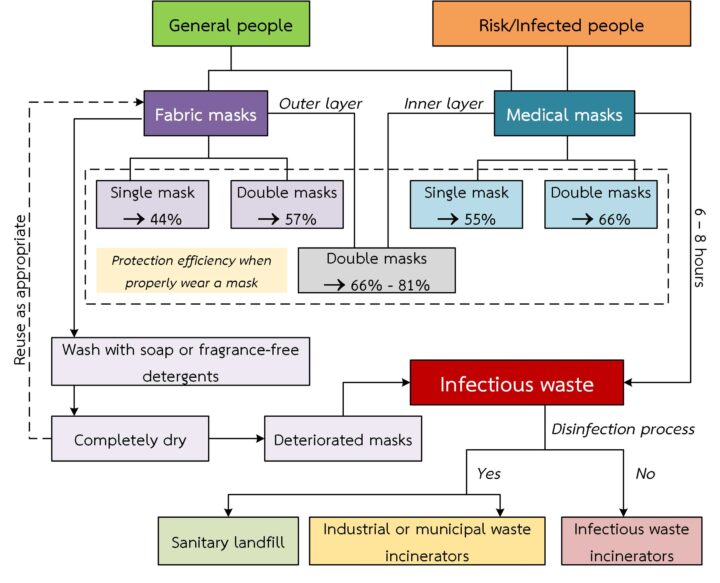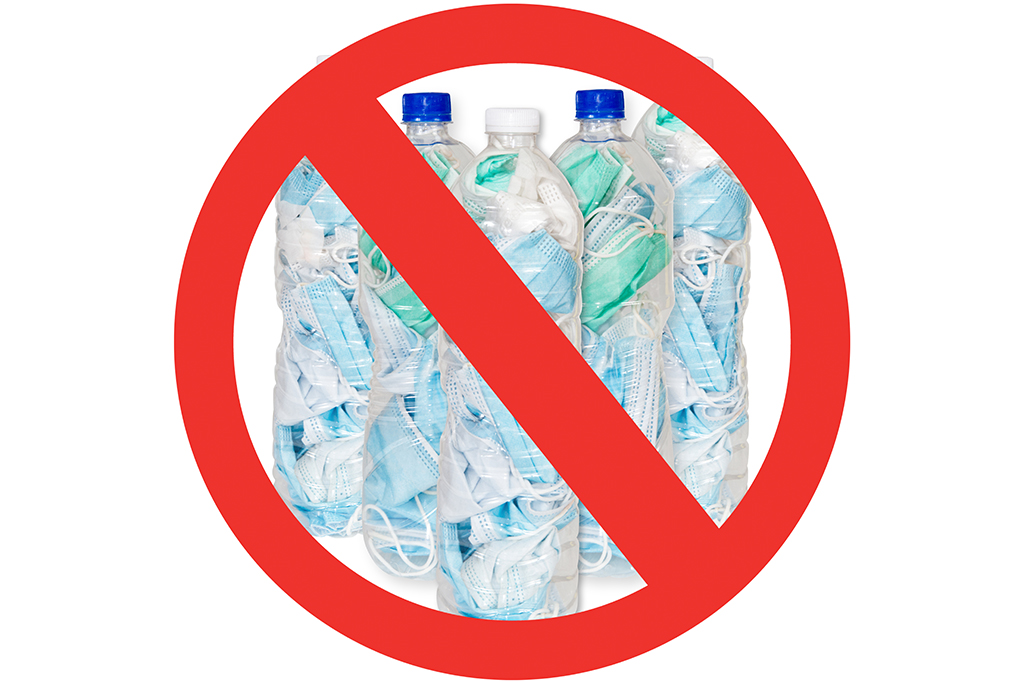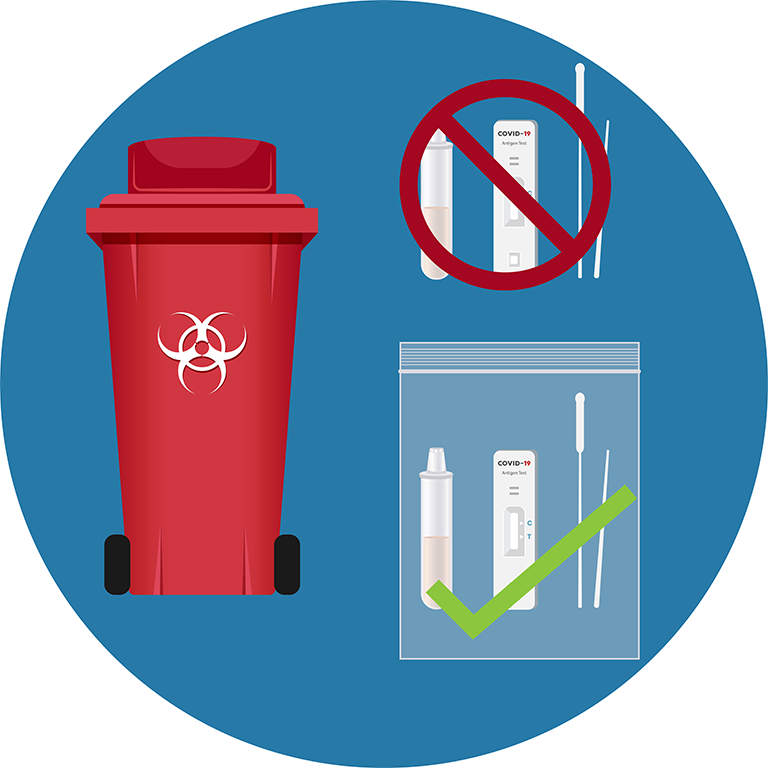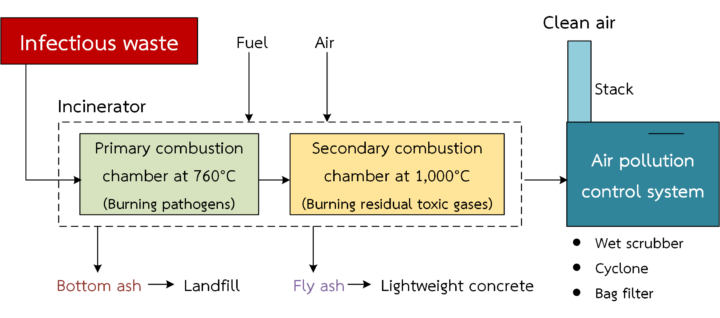The campaign for the use of face masks has been very effective. People wear masks as a habit when in public spaces to help reduce the spread of viruses. But the problem that ensued is the overwhelming amount of used single-use masks. In Thailand alone, it is estimated that between 1.5 to 2 million used masks are disposed of per day.
Prof. Dr. Pisut Painmanakul, Associate Dean (Innovation and Sustainability Strategy), Faculty of Engineering, Chulalongkorn University revealed the research finding that shows that the COVID-19 virus can live on polyethylene plastic that is a component of disposable masks for up to 7 days.
“We can’t tell whether a mask has the virus on it, so we need to assume that all used masks are infectious waste which requires proper disposal so as not to spread the germs and harm the environment, especially marine ecosystems, in the long run. It is estimated that nearly 1.6 billion used face masks were discarded in the ocean in 2020,” said Prof. Dr. Pisut emphasizing the importance of infectious waste management, while proposing the 5C 1S principle of a comprehensive solution.

Prof. Dr. Pisut Painmanakul
Conserve & Share – Know Your Masks and Care for the Society
Prof. Dr. Pisut explained that “Conserve” means choosing reusable masks like those made of cloth and spending less time in public areas to reduce the use of masks.
“Research shows that wearing double-layer masks can increase the effectiveness of disease prevention, but the use of disposable medical masks for both layers not only is wasteful but also causes more infectious waste.”
Prof. Dr. Pisut discussed the recommendations from the US Centers for Disease Control and Prevention (CDC) on the use of double-layer masks that “wearing the disposable mask underneath a cloth mask that firmly fits the face will increase the protection to 80%.”

“Share” is to think about others and care about the society and the environment by being responsible, such as disposing of used masks properly.
“Always fold used masks before throwing them away to reduce the chance of spreading germs to others.”
Prof. Dr. Pisut cited the example that’s being shared on social media recommending disposing of used masks in plastic PET bottles.

“This absolutely should not be done for three important reasons. First, PET plastic bottles are recyclable, but when coming in contact with infectious waste, they become infectious waste, and must be disposed of as such and cannot be recycled.
Secondly, infectious waste is disposed of by incineration, and burning plastic bottles creates more pollution. Lastly, plastic bottles can be sold for money, so waste collectors who want the bottles must first remove used masks from the bottles and can spread COVID-19.”
Contain & Convey – Separate and Seal Infectious Waste Properly before Disposal
Used face masks and ATK test kits must be separated from other types of solid waste.
“Discarding used masks in with general waste will turn everything into infectious waste, and must be disposed of accordingly instead of by conventional waste disposal.”
Prof. Dr. Pisut recommended a two-step approach to separate and discard the used ATK test kits:
- The non-infectious parts, i.e., the packaging that contains the swab kit and the vial can be disposed of like a general recyclable waste.
- The infectious parts are the cotton swab, the solution tube, and the measuring strip that once used must be disposed of properly. Put all these in a plastic bag. Write “Infectious waste” on the bag before throwing it in a red bin designated specifically for infectious waste.

Prof. Dr. Pisut recommended using packaging clearly labeled infectious waste such as red bags which are specially used for infectious waste so it can be properly handled.
In addition, “Convey” transport vehicles must be specially designed with features such as:
- Closed-off trunk lined with durable materials that are easy to clean.
- Safety devices for drivers and operators of infectious waste collecting vehicles.
- Clean the infectious waste collecting vehicles at least once a week.
- Clear signage spelling out “Infectious Waste Only” on the outside of the vehicles.
“These are the proper procedures for handling infectious waste that will help reduce the spread of pathogens,” said Prof. Dr. Pisut.
Combustion & Complete – Pollution-free Infectious Waste Incineration
The best way to dispose of infectious waste is incineration, but differently from the way general waste is incinerated. Prof. Dr. Pisut explained that infectious waste goes through two stages of incineration starting in the first furnace at 760 degrees Celsius to kill the diseases, followed by the second furnace to eliminate the pollution from the first furnace.
“Burning waste at high temperatures will always generate pollution. So, we have to use the second incinerator at temperatures up to 1000°C to burn the remaining toxic gases. After incineration of infectious waste, the remaining air in the second furnace must be connected to the air pollution treatment system to ensure that the air to be emitted is clean and pollution-free,” Prof. Dr. Pisut said.

In addition, comprehensive infectious waste management also concerns the removal of heavy and light ashes generated by the two incinerators. The heavy ashes can be buried, while the light ashes can be used to make lightweight concrete blocks.
“This is a complete, step-by-step infectious waste disposal process with no pollution or waste being released to our planet.”
Prof. Dr. Pisut reiterated that all parties can help reduce the problem of infectious waste from the outset if we all choose reusable masks, separate infectious waste, and dispose of it properly. The rest of the waste management is the responsibility of the government and related agencies to implement suitable and comprehensive solutions.

